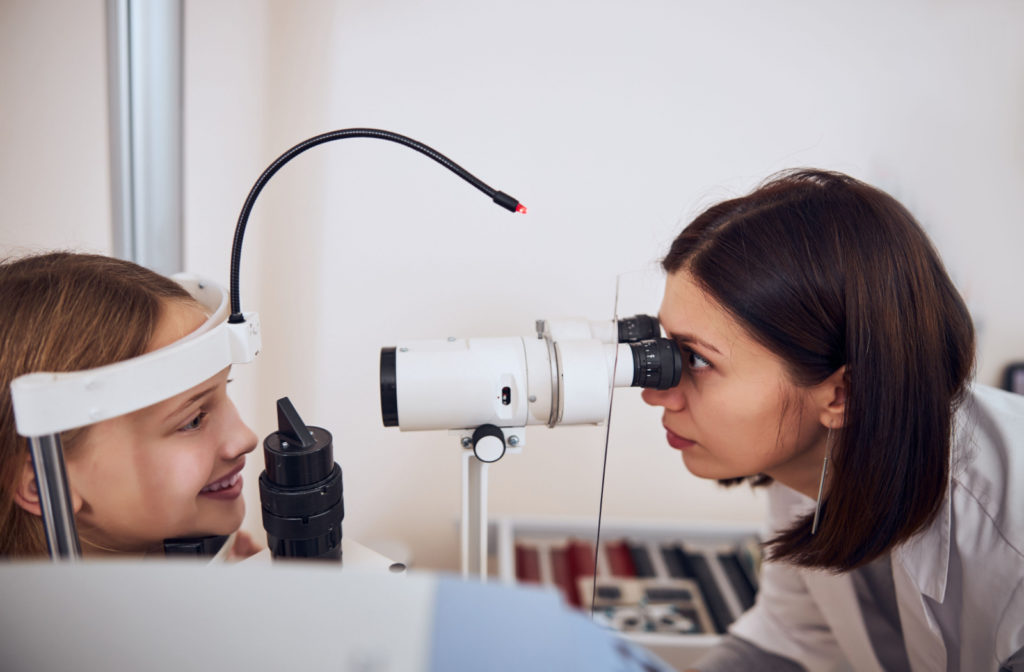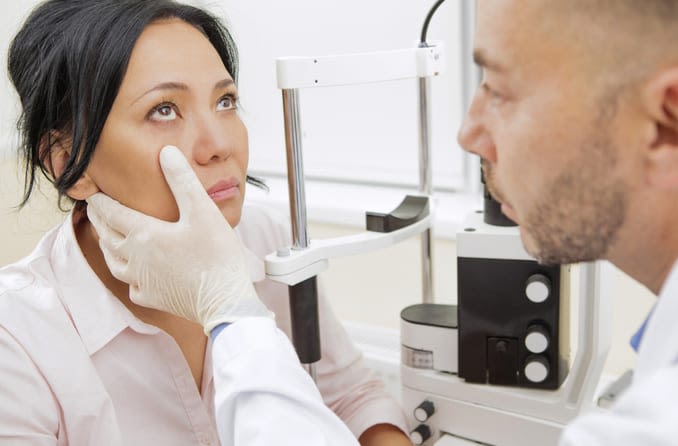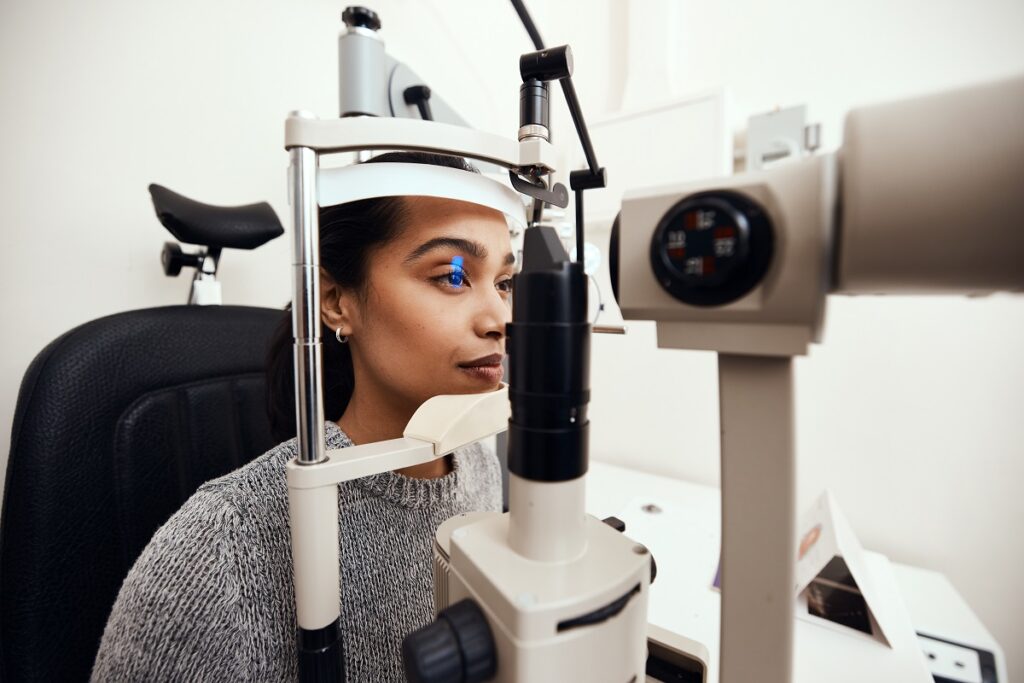Checking Out the Most Recent Technical Improvements in Optometry and What They Mean for Optometrists
From the accuracy of Optical Coherence Tomography to the nuanced insights used by AI-driven analysis tools, these advancements are setting brand-new standards in person evaluation and treatment. As these innovations penetrate the practice, optometrists are encountered with the challenge of embracing these tools to improve patient results.
Technologies in Diagnostic Tools
Advancing the area of optometry, technologies in diagnostic devices have actually reinvented the means eye care experts examine and detect eye problems and aesthetic problems. The past years has experienced considerable technical developments, enabling more accurate and extensive assessments. Optical Coherence Tomography (OCT), as an example, provides high-resolution cross-sectional photos of the retina, enabling the very early detection of diseases such as glaucoma and age-related macular degeneration. This non-invasive imaging strategy has actually ended up being crucial in modern optometric method.
Another secret innovation is the introduction of advanced corneal topography systems, which map the surface curvature of the cornea with precision. These devices are specifically useful for fitting call lenses and diagnosing corneal problems. Electronic retinal imaging has actually changed conventional ophthalmoscopy, using detailed, scenic views of the retina that assist in thorough visual examinations.
The development of wavefront aberrometry has also been vital, making it possible for the evaluation of refractive mistakes with unmatched accuracy (Opticore Optometry). This modern technology aids in tailoring rehabilitative lenses and enhancing surgical outcomes for refractive surgical treatments. Jointly, these analysis improvements encourage eye doctors to provide remarkable patient care, guaranteeing early intervention and tailored therapy approaches, inevitably improving visual health and wellness end results
AI in Person Management
Building on the foundation of sophisticated analysis tools, the unification of fabricated intelligence (AI) in client administration stands for a transformative jump for optometry. AI systems are significantly employed to enhance effectiveness, precision, and personalization in client treatment.
In addition, AI-driven systems assist in streamlined patient interactions and administrative processes. Automated organizing, digital examinations, and customized follow-up plans not just boost patient complete satisfaction but also maximize time administration for professionals. These systems can triage people based upon the necessity of their conditions, ensuring that those in important need obtain prompt attention.
In addition, AI improves decision-making by giving optometrists with evidence-based suggestions and treatment paths. By integrating information from electronic health records, AI tools offer understandings that notify medical choices, lowering the danger of mistakes and improving patient end results. As AI remains to advance, its function in person administration will likely broaden, improving the landscape of optometric care.
Advancements in Retinal Imaging
In the world of optometry, retinal imaging has seen impressive technological improvements that are improving diagnostic capacities and individual treatment. Innovations such as Optical Coherence Tomography (OCT) and fundus digital photography have actually revolutionized just how optometrists visualize and analyze the retina. OCT, specifically, provides high-resolution, cross-sectional photos of the retina, permitting the comprehensive exam of its layers. This ability is invaluable for early discovery and monitoring of conditions like glaucoma, diabetic retinopathy, and age-related macular degeneration.
Enhanced imaging methods like OCT angiography are further refining diagnostic precision. Opticore Optometry. Such innovations assist in the recognition of minute retinal changes that can indicate illness progression.
Moreover, advancements in artificial intelligence are augmenting retinal imaging by allowing automated evaluation of large datasets. These systems help eye doctors in recognizing patterns a measure of pathology, thereby improving diagnostic accuracy and efficiency. Jointly, these technologies are transforming retinal imaging right into a keystone of contemporary eye care, improving results and broadening healing possibilities.
Teleoptometry's Expanding Role
Teleoptometry is increasingly ending up being a vital component of eye treatment, driven by improvements in data and analysis tools. As optometry accepts electronic change, teleoptometry promotes remote appointments, allowing eye doctors to extend their solutions past conventional borders. This is specifically helpful in rural and underserved locations where accessibility to specialized eye care is usually restricted. By leveraging high-resolution video conferencing and progressed retinal imaging, eye doctors can conduct extensive eye tests from afar, guaranteeing timely diagnosis and treatment.
The combination of synthetic knowledge (AI) more enhances teleoptometry, allowing the analysis of visual data and aiding in the detection of eye problems such as glaucoma and diabetic retinopathy. AI-powered formulas can quickly interpret intricate imaging data, giving optometrists with valuable insights that reinforce scientific decision-making.
Additionally, teleoptometry sustains continuity of care with smooth integration with digital wellness records (EHRs), permitting eye doctors to maintain comprehensive client backgrounds. This guarantees that patients obtain constant and customized treatment even when seeking advice from various experts.
Regardless of these advantages, challenges stay, consisting of ensuring information safety and taking care of client expectations. Nonetheless, teleoptometry stands for a substantial stride towards even more available, effective, and patient-centered eye care. As innovation progresses, its duty is poised to increase even more.

Future Fads in Eye Care
A myriad of cutting-edge patterns is readied to improve the future of eye treatment, driven by technical innovations and the developing demands of clients. One considerable fad is the assimilation of artificial knowledge (AI) in diagnostics, which promises to enhance the accuracy and effectiveness of eye evaluations. AI formulas can evaluate huge quantities of data from retinal pictures, visit this page potentially spotting problems like diabetic retinopathy and glaucoma earlier than typical techniques.
Furthermore, personalized medication is gaining grip in optometry, with genetic screening educating tailored therapy strategies. This find out here approach aims to maximize person end results by customizing interventions to individual genetic profiles. Wearable technology, such as clever call lenses, is also coming up, supplying real-time surveillance of intraocular stress or glucose levels, hence offering continuous insights into eye and systemic health and wellness.
The adoption of enhanced reality (AR) and online fact (VR) in training and individual education is an additional emerging fad. These innovations supply immersive experiences that can improve understanding and skills both for eye doctors and people. As these patterns advance, optometrists must stay abreast of technical advancements to supply cutting-edge treatment, guaranteeing better client end results and complete satisfaction in the dynamic landscape of eye treatment.
Conclusion

Collectively, these analysis developments equip optometrists to provide remarkable person care, making sure very early treatment and tailored treatment strategies, ultimately enhancing aesthetic health end results.

As these modern technologies proceed to advance, optometrists must adjust and integrate them into method, inevitably maximizing process performance and raising the criterion of eye treatment supplied to individuals.